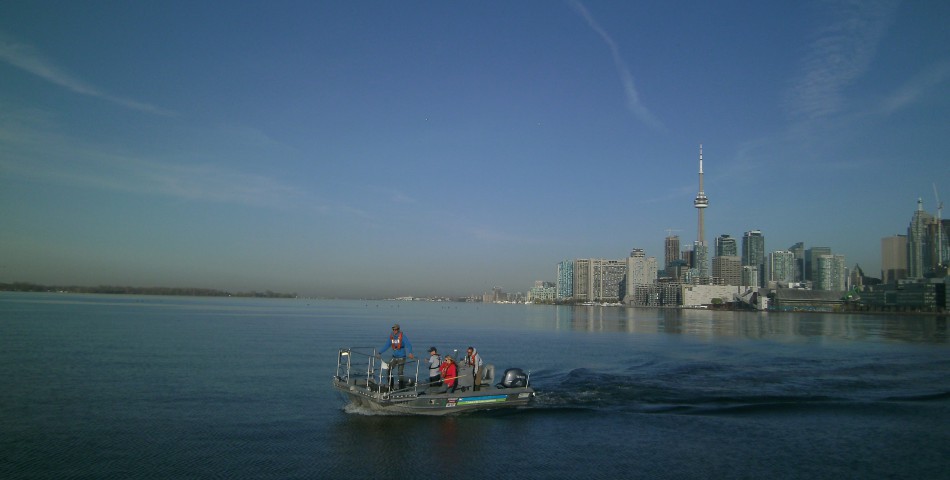Funded By
NSERC (2013-2016 Strategic Grant) and the Great Lakes Sustainability Fund
Research Team
- Dr. Steven Cooke, Carleton University
- Dr. Nick Lapointe, Carleton University
- Dr. Jon Midwood, Carleton University
- Dr. Matt Wells, University of Toronto
- Dr. Susan Doka, Fisheries and Oceans Canada
- Ms. Emily Morton, Toronto and Region Conservation Authority
- Maxime Veilleux, M.Sc. Student
Research Summary
Many of the coastal embayments in the Laurentian Great Lakes are listed as areas of concern (AOC) and have expensive remedial action plans in place that aim to restore beneficial uses, such as sustainable fisheries. Our research will determine how key fish species respond to habitat restoration projects, to help ensure the effectiveness of these remediation efforts. While basic habit requirements of key fish species are broadly known, it is not known how fish communities respond to specific restoration. In addition, winter habitat selection remains poorly studied and is usually neglected in restoration efforts. Another difficultly in successfully designing warm water habitat is that the temperature regime is strongly controlled by exchange flows between the bays and lakes that potentially render warm water habitats unsuitable during critical periods. Toronto Harbour is a key AOC where beneficial uses are being restored with a goal of de-listing by 2020.
Currently, $8 million is being spent on restoration in the harbour and $200 million may be spent in the next two decades. Using Toronto Harbour as a model, we will:
- Evaluate fish response to specific restoration activities
- Identify key fish habitats across seasons (including winter),
- Characterize water circulation and temperature profiles,
- Examine fish responses to changes in thermal conditions in created habitats and
- Assess long-term fish community responses to multiple habitat restoration activities.
We will use fixed-receiver acoustic telemetry stations to monitor fish movements and habitat selection over multiple years at both coarse and fine spatiotemporal scales. Pre- and post-restoration data will be collected for several habitat creation projects in the harbour. Observations of water currents and thermal stratification will be integrated into a predictive water circulation model. Our research will inform the design and creation of expensive new habitats so that appropriate thermal and physical conditions can be achieved for viable fish habitat in coastal embayments throughout the Great Lakes, thus maintaining and enhancing the ecosystem services provided by these important aquatic systems.





